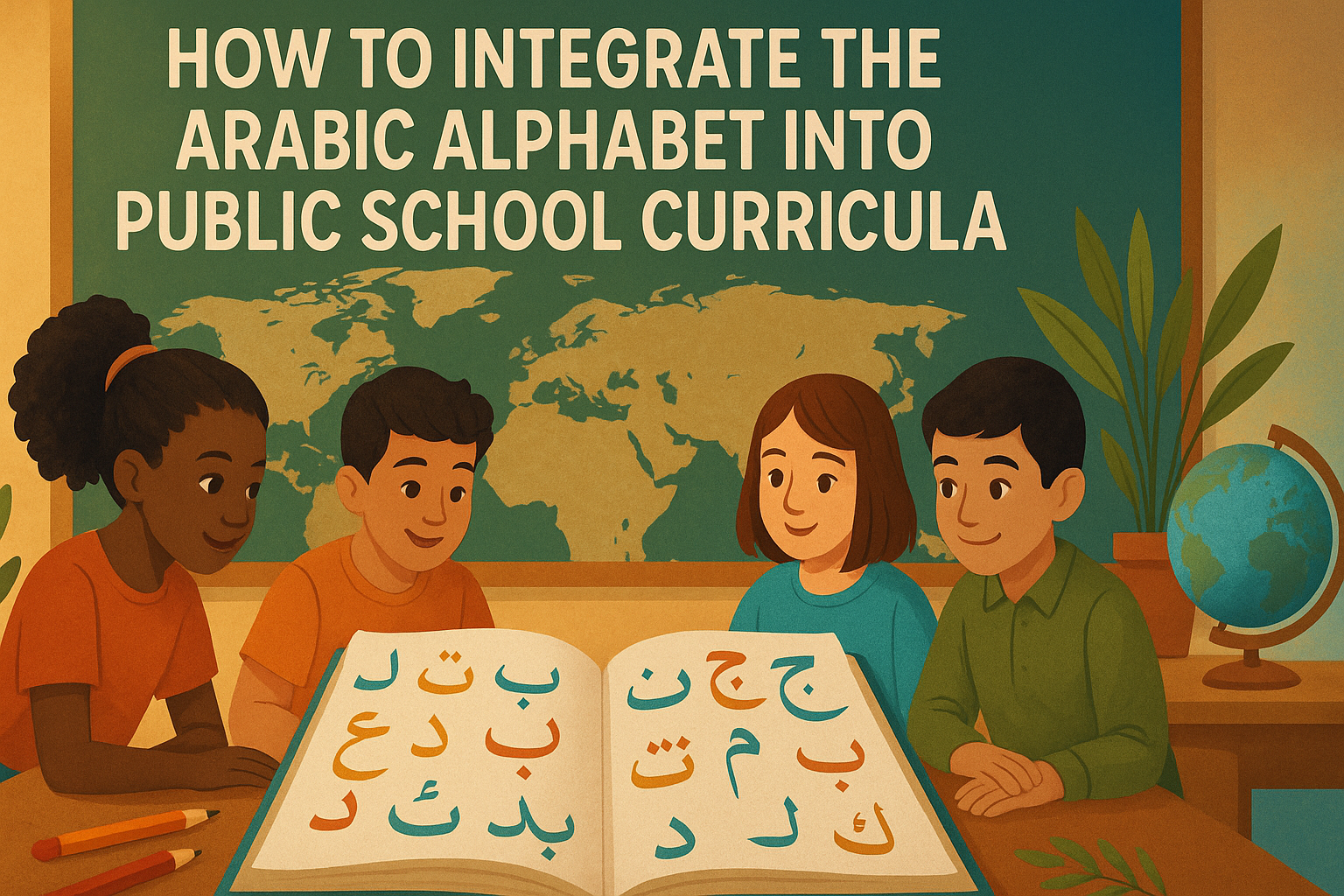How to Integrate the Arabic Alphabet into Public School Curricula
In today’s globalized world, linguistic diversity is more valuable than ever. While many schools prioritize popular languages like Spanish, French, or Mandarin, integrating the Arabic alphabet into public school curricula can offer unique benefits. From enhancing cognitive abilities to fostering cultural understanding, learning Arabic can be a game-changer for students. But how can schools effectively include the Arabic alphabet in their programs? Let’s explore some actionable insights! 🌍
Table of Contents
1. The Importance of Learning Arabic
2. Strategies for Integration
3. Resources for Teachers and Students
4. Overcoming Challenges
5. Conclusion
6. FAQs

The Importance of Learning Arabic
Arabic is spoken by over 300 million people worldwide and is the official language of 22 countries. By learning Arabic, students can open doors to new cultural insights and economic opportunities. Moreover, mastering a language with a different script, like Arabic, can enhance cognitive skills such as problem-solving and memory retention. 🧠
Strategies for Integration
Integrating the Arabic alphabet into school curricula doesn’t have to be overwhelming. Here are some strategies that can make the process smoother:
Start with the Basics
Begin by introducing the Arabic alphabet to younger students. Incorporate fun activities, such as writing their names or simple words in Arabic, to spark interest and curiosity.
Incorporate Multimedia Tools
Use technology to your advantage! Interactive apps and online platforms can make learning the Arabic alphabet engaging and interactive. Look for resources that offer games, songs, and videos. 📱
Cross-Curricular Connections
Connect the Arabic alphabet to other subjects. For instance, in history lessons, explore the rich cultural heritage of Arabic-speaking countries, or in art classes, delve into Arabic calligraphy.
Resources for Teachers and Students
Having the right resources is crucial for effective learning. Here are some recommendations:
Books and Workbooks
Look for beginner-friendly books that introduce the Arabic alphabet gradually. Workbooks that offer practice sheets can be particularly helpful.
Online Courses
Platforms like Duolingo and Rosetta Stone offer Arabic courses that can supplement classroom learning.
Local Cultural Organizations
Engage with local Arabic cultural centers or communities. They might offer workshops or language exchange programs that can enrich the learning experience. 🤝
Overcoming Challenges
Every new initiative comes with its own set of challenges, and integrating the Arabic alphabet is no exception. Here are some common obstacles and how to tackle them:
Limited Resources
Advocate for funding or partnerships with educational organizations to access more resources or training for teachers.
Resistance to Change
Communicate the benefits of learning Arabic to parents and administrators. Highlight how it can enhance students‘ future academic and career prospects.
Conclusion
Integrating the Arabic alphabet into public school curricula can be a rewarding journey that broadens students‘ horizons and equips them with valuable skills. While challenges exist, with the right strategies and resources, schools can successfully navigate this path. Let’s embrace linguistic diversity and prepare our students for a connected world. 🌟
FAQs
Why is learning the Arabic alphabet beneficial for students?
Learning the Arabic alphabet enhances cognitive abilities, fosters cultural understanding, and opens up new academic and career opportunities.
How can schools start integrating the Arabic alphabet?
Schools can begin by introducing the basics at an early age, using multimedia tools, and connecting Arabic learning to other subjects.
What resources are available for teaching the Arabic alphabet?
Teachers and students can use beginner-friendly books, online courses, and engage with local cultural organizations for additional support.
What should schools do if they face resistance to adding Arabic to the curriculum?
Highlight the long-term benefits of learning Arabic and seek support from educational organizations to address concerns and gain buy-in from stakeholders.






